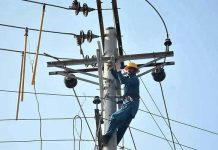DM Monitoring
BANGKOK: Despite being severely dragged down by the protracted Covid-19 pandemic, many economies in Asia seem to be bulletproof, kind of. One of the top performers has been Vietnam, long one of Asia’s fastest growing economies, which expanded by 2.62% in the third quarter.
Boosted by a rally in exports as the country slowly emerges from a virus-induced slowdown, gross domestic product (GDP) growth improved from just 0.36% in April and May, though that was better than most countries which suffered painful contractions.
Exports in the quarter to Sept 30 rose 34% from the previous quarter, and 11% year-on-year. The manufacturing purchasing managers’ index (PMI), reflecting gains from the US-China trade spat over the past two years, improved to the best in more than a year in September.
Japan’s PMI in September expanded to 47.7, its highest since February, from 47.2 in August, while Thailand and the Philippines also edged higher. South Korean exports were up on the month for the first time since the pandemic hit. In India, September factory activity grew at its fastest pace in over eight years as a relaxation of lockdown restrictions drove a surge in demand and output, though Covid infection cases continue to rise.
Such signs of recovery are welcome news for Asia’s third-largest economy, which is nonetheless still on pace for its first full-year contraction since 1979.
Overall, the figures suggest that Asia’s resilient economies will bounce back faster than many in the rest of the world. The region is projected to account for 50% of the global economy by 2040. The United States cannot ignore this potential. Washington’s strategy toward Asia is being closely watched, particularly as the US election draws near on Nov 3. If Washington wants to engage more closely with Asia, trade is a key, and returning to the Pacific trade deal is seen as a catalyst. President Donald Trump pulled the US out of the Trans-Pacific Partnership (TPP) as soon as he took office in early 2017. That was followed by unilateral tariff increases and a focus on bilateral negotiations.
Democrat presidential candidate Joe Biden has said he would consider US participation in the TPP if the terms were revised. He has stressed the importance for the US to write the rules on trade.
In fact, some of the issues that even Democrats objected to have been eliminated from the pact, now consisting of 11 countries and known as the Comprehensive and Progressive Agreement for Trans-Pacific Partnership (CPTPP). These include investor-state dispute settlement and data exclusivity for biologic drugs.
US participation in the CPTPP would give Washington an opportunity to work with like-minded countries to promote an alternative economic model to Beijing’s state-led capitalism.
The fact is, the Trump administration’s go-it-alone approach has had limited success in reining in China’s unfair trade practices, wrote Wendy Cutler, a former acting deputy US Trade Representative in charge of the TPP.
The Covid crisis has also highlighted vulnerabilities in supply chain networks for strategic sectors, from medical supplies to semiconductors.
Moving all production back to companies’ home countries, known as “reshoring”, is not feasible. Consequently, establishing supply chains with trusted partners is an important alternative. With its common rules and standards to facilitate movement of goods and services, the CPTPP creates a strong basis for such trust. China, meanwhile, has made the 15-nation Regional Comprehensive Economic Partnership (RCEP) its priority, supplemented by a China-Japan-Korea trade pact now under construction, and the massive Belt and Road Initiative.
But joining the CPTPP could offer a complementary path for Beijing to deepen engagement in the region.
While most CPTPP countries would not want to say “no” to Beijing given their dependence on the Chinese economy, they worry about saying “yes” given the likely US reaction. A push by China to join the pact would squeeze existing members, and US allies would probably try to string out talks with Beijing even as they escalate efforts to win the US back.
To make the deal more attractive to a Biden administration, experts say members need to consider further changes, for example, on digital trade and labour and climate issues.
From the US perspective, more trade engagement with Asia is clearly the best policy. Few Asian countries want to see China dominate the region. Yet Asia is fractured politically, and growing more so with the rise of great-power competition.
If the US were to seek to rejoin the CPTPP, it would be a stunning reversal. Yet, the case for the US participation is more compelling than ever.





